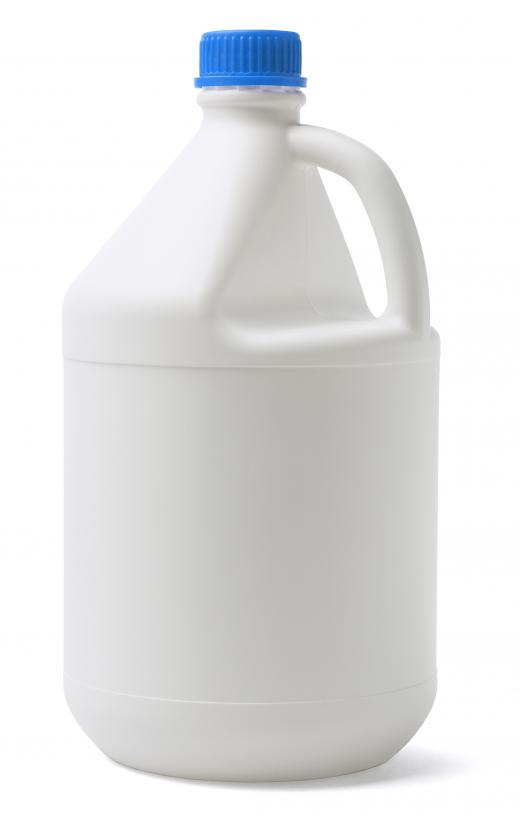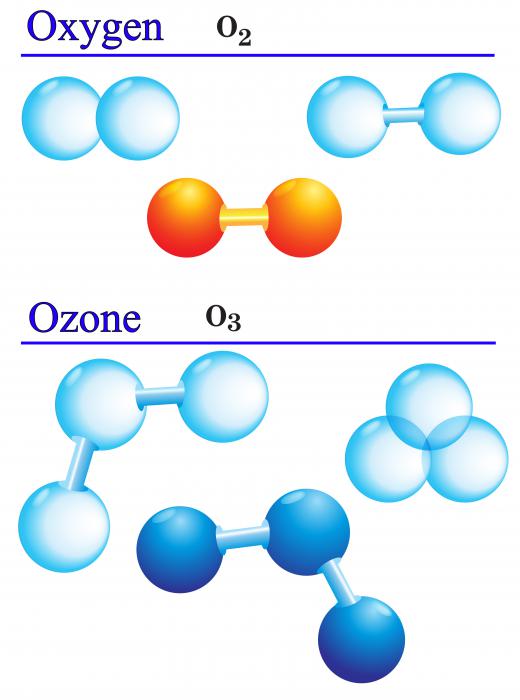What is Chlorine?
Chlorine is a common element on the Earth, but it is not found naturally in its pure state as it is very reactive and tends to form compounds with other elements. At room temperature and normal pressure, it is a yellow-green gas that is heavier than air. Although some of its compounds are essential to many life forms — including humans — in its elemental form, the gas is very toxic. Chlorine is used industrially to produce plastics, insecticides, and pharmaceuticals; to sanitize water for drinking and in swimming pools; and as a bleaching agent in the paper industry.
Properties

Element number 17 in the periodic table, chlorine is one of a group of elements that share similar chemical properties known as the halogens, with the other members being fluorine, bromine, iodine and astatine. The gas dissolves in water, forming a mixture of hypochlorous and hydrochloric acids, and free chlorine. It is a strong oxidizing agent, which means that it tends to grab electrons from other elements to form compounds. It combines easily in this way with hydrogen and with metals to form chlorides, as well as combining readily with many organic compounds.
Production

This element is produced industrially mainly by the electrolysis of solutions of common salt (sodium chloride). The process splits the salt into its elements, with the sodium combining with water to form sodium hydroxide and the chlorine produced as a gas. There are a number of simple ways of producing the element in the laboratory, for example, by the action of acids on sodium or calcium hypochlorite, or by mixing hydrochloric acid and potassium permanganate.
Uses

The oxidizing properties of this element make it very effective at killing harmful microorganisms. Over 25,000 people worldwide die each day as a result of waterborne diseases, such as cholera and typhoid. Water chlorination is one of the most widely used safeguards for drinking water supplies. Chlorine may be added to water as a gas or in the form of hypochlorite compounds, which may be solid or solutions in water. Hypochlorites release small amounts of the element into the water.

Very low concentrations of chlorine are sufficient to kill most disease-causing organisms. Although it is normally added at water treatment plants, very small amounts are allowed to remain in the water in case it becomes contaminated on its way to homes. Some concerns have been expressed about the possible health effects of this element and its byproducts in drinking water, but there is no conclusive evidence that it is harmful. The consensus is that the benefits of water chlorination far outweigh the risks. In 1991, a major cholera outbreak in Latin America was blamed by international health officials on a decision by the Peruvian government to stop chlorinating some water supplies in response to concerns about its effects on human health.

Chlorine in tap water may be harmful to fish and to some houseplants, but it can be removed by boiling the water for a few minutes or by attaching a filter to the faucet. Another method is to add dechlorination tablets. This renders the water undrinkable, but it is suitable for filling fish tanks.
The element is also used to disinfect swimming pools. Since the water is not for drinking, larger quantities may be used and the smell may be quite noticeable.
Chlorine is also used in the following ways:
- In pharmaceuticals, including important antibiotics and anti-malarial drugs;
- To make insecticides, such as dichlorodiphenyltrichloroethane (DDT);
- As part of some plastics, such as polyvinyl chloride (PVC);
- For the bleaching of paper in pulp mills;
- In household bleach and disinfectants.
Environmental Concerns

Many chlorine compounds have been implicated in damage to ecosystems, wildlife, and the environment. Chlorofluorocarbons (CFCs) — formerly used as refrigerants and propellants — on reaching the upper atmosphere, release chlorine gas. This decomposes ozone, damaging the ozone layer that protects life on Earth from excessive exposure to ultraviolet radiation. As a result, the use of these compounds has been phased out.
Concerns about the accumulation of DDT in the food chain and, in particular, its effects on birds of prey, have led to a complete ban in the US and to a worldwide ban on agricultural use. It is, however, still used in some areas to control malaria-carrying mosquitoes.
Chlorine and compounds derived from it can find their way into rivers and lakes though waste water from pulp mills and from homes with chlorinated water or where bleach has been used. If present in sufficient amounts, it may be harmful to aquatic life, either directly or through accumulation of its compounds in the food chain. In the US, the government has set legal safety limits of 4 milligrams of chlorine per liter of drinking water and 10 milligrams per liter of lake and stream water.
Health and Safety Issues
Chlorine gas can affect health, depending on the level and duration of exposure. It is corrosive and irritating to the eyes, skin, and respiratory tract. Exposure to low concentrations may cause a sore throat, eye and skin irritation, and coughing. At higher concentrations, the gas can cause narrowing of the bronchi, burning of the eyes, and a blue coloring of the skin. It can also cause a build-up of fluid in the lungs and pain in the chest.
Exposure to high concentrations of the gas can be rapidly fatal — it was used as a chemical weapon during World War I — but is unlikely in everyday situations. Household bleach can, however, be dangerous if mishandled. It can release large amounts of the gas on contact with acids, and combines with products containing ammonia to form toxic chloramines.
AS FEATURED ON:
AS FEATURED ON:
















Discussion Comments
Why are chlorine and sodium not used directly?
I am highly allergic to chlorine. It is not all it is cranked up to be. I use hydrogen peroxide instead. Please be careful when using chlorine. It can cause you to become sick when you are showering with it in your water supply, due to the fact that when it heats up it turns into a gas.
Did you know that bleach is the only thing that will kill the aids virus? It is used to disinfect all the instruments used in running laboratory test, the AIDS test, and when finished testing the instruments are put in bit containers of bleach. That's how i know.
Unfortunately we are not able to drink bleach, it would kill us. Maybe everyone should start having sex in the bathtub with a little bleach like swimming pools.
does anyone know about organic compounds including chloride? i really need help. if anyone knows can you let me know ASAP? i need it for my essay.
how does chlorine turn to chloramines in the water treatment process ? and what are monochloramines ?
Post your comments